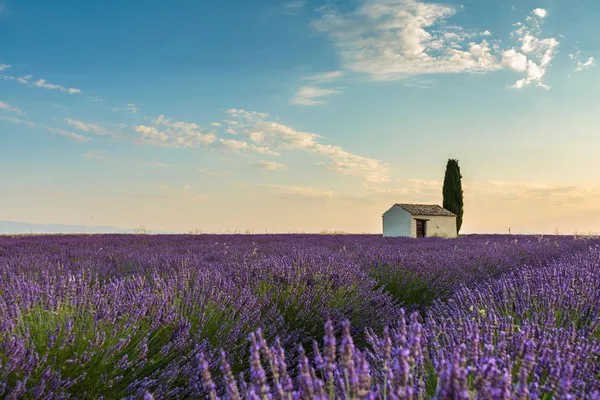Flowers have long been associated with a sense of healing, offering solace, comfort, and hope during times of physical or emotional distress. Across cultures and throughout history, certain flowers have been revered for their symbolic representation of healing and rejuvenation.
The Symbolism of Flowers in Healing
1. Historical Significance
Flowers have played a significant role in healing practices for centuries. Ancient civilizations, such as the Egyptians, Greeks, and Romans, recognized the therapeutic qualities of certain flowers and incorporated them into their medicinal rituals. The symbolic connection between flowers and healing stems from their ability to soothe the spirit, uplift the mood, and promote overall well-being.
2. Emotional Healing and Flowers
Flowers have a profound impact on our emotional well-being. Research has shown that exposure to flowers can reduce stress, anxiety, and depression, while increasing feelings of happiness and relaxation. The vibrant colors, delicate fragrances, and graceful forms of flowers evoke positive emotions, making them powerful tools in promoting emotional healing and restoring inner balance.
Flowers Symbolizing Healing
1. Lavender: Calming and Balancing
Lavender is a well-known flower that symbolizes healing and relaxation. Its soothing aroma has been used for centuries to promote calmness and alleviate anxiety. Lavender essential oil is often used in aromatherapy to induce a sense of tranquility and improve sleep quality. The gentle purple hues of lavender flowers evoke a sense of serenity, making them a popular choice for creating peaceful environments.
2. Chamomile: Soothing and Rejuvenating
Chamomile is another flower associated with healing properties, particularly in promoting relaxation and digestive health. Chamomile tea, derived from the dried flowers, has been used for centuries as a natural remedy for soothing digestive discomfort and relieving stress. The delicate white petals of chamomile flowers symbolize purity and provide a visual representation of the calming effects it offers.
3. Rose: Nurturing and Comforting
Roses have long been regarded as symbols of love and beauty, but they also possess healing qualities. The gentle and nurturing energy of roses is believed to provide emotional comfort and facilitate healing from emotional wounds. The velvety petals and sweet fragrance of roses evoke a sense of tenderness and compassion, making them a powerful symbol of love and healing.
Cultural Perspectives on Healing Flowers
1. Lotus: Spiritual Awakening and Transformation
In many Eastern cultures, the lotus flower holds deep symbolic significance in the realm of healing and spiritual transformation. The lotus emerges from muddy waters, symbolizing the journey from darkness to enlightenment. Its pristine petals represent purity and the unfolding of one’s true self. The lotus is often associated with inner healing, spiritual growth, and the transcendent power of the human spirit.
2. Sunflower: Strength and Resilience
Sunflowers are revered for their vibrant yellow petals and their ability to follow the path of the sun. In various cultures, sunflowers symbolize strength, resilience, and the power to overcome adversity. The towering stature of sunflowers represents the ability to rise above challenges and find inner strength. Their bright and cheerful appearance brings hope and optimism, making them a potent symbol of healing and renewal.
Healing Gardens and Flower Therapy
1. Therapeutic Benefits of Gardens
Healing gardens have gained recognition for their ability to promote physical, emotional, and spiritual well-being. These carefully curated spaces incorporate a variety of flowers, plants, and natural elements to create a serene and healing environment. Engaging with nature, tending to plants, and immersing oneself in the beauty of flowers can provide a sense of peace, restoration, and connection to the natural world.
2. Flower Therapy and Aromatherapy
Flower therapy, also known as floral or flower essence therapy, harnesses the energetic properties of flowers to promote healing. Flower essences are made by infusing flowers in water and preserving the resulting liquid. These essences are believed to contain the healing vibrations of the flowers and can be used orally, topically, or in aromatherapy. The use of flower essences and essential oils derived from flowers can help balance emotions, alleviate stress, and support overall well-being.
Conclusion
Flowers possess a profound ability to bring healing, comfort, and rejuvenation to our lives.Through their vibrant colors, delicate fragrances, and symbolic representations, flowers evoke emotions, promote well-being, and offer a glimpse of the transformative power of nature. Whether it is the calming lavender, soothing chamomile, nurturing rose, or any other flower associated with healing, these remarkable gifts from nature remind us of the profound connection between our physical, emotional, and spiritual well-being. Embrace the transformative power of flowers andlet their beauty and symbolism guide you on a journey of healing and self-discovery. May the profound meaning behind these blooms inspire you to seek solace, find strength, and embrace the transformative power of nature’s extraordinary gifts.


